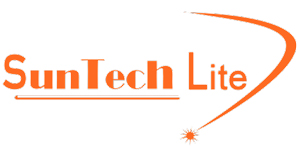Is it difficult for you to distinguish APA102 vs APA107 vs HD107 vs HD107S vs HD108? These LED IC chips are widely used in addressable LED strips and are critical to the performance of the LED strip. What are their characteristics and differences? Which one is suitable for your project? Continue reading.
APA102 vs APA107 vs HD107 vs HD107S vs HD108 Comparison Table
| Feature |
APA102 |
APA107 |
HD107 |
HD107S |
HD108 |
|---|---|---|---|---|---|
| PWM Refresh Rate |
20 kHz |
9 kHz |
26+ kHz |
27 kHz |
27 kHz |
| Transmission Rate |
20 MHz |
30 MHz |
40 MHz |
40 MHz |
40 MHz |
| Bit Depth |
8 bits |
8 bits |
8 bits |
8 bits |
16 bits |
| Gray Scales |
256 |
256 |
256 |
256 |
65536 |
| Voltage Drop |
Moderate |
Moderate |
Moderate |
Moderate |
Less |
| Energy Saving |
Moderate |
Moderate |
High |
High |
High |
| Application |
General lighting |
General lighting |
General lighting |
General lighting |
High-quality display |
Snapshot: APA102 vs APA107 vs HD107 vs HD107S vs HD108 Distinct Features
The APA102 is noted for its twin signal lines (data and clock), which enable quicker data transmission (20 MHz) and higher refresh rates (20 kHz). The APA102’s reliable communication and precise control over LED color and brightness make it perfect for applications that require lag-free dynamic lighting effects, such as LED displays and animations.
The APA107 is sometimes seen as the direct successor to the APA102, preserving the dual-signal architecture but at a reduced cost, striking a compromise between performance and cost.
HD107 outperforms APA107 by offering a faster PWM refresh rate (26+ kHz), resulting in smoother and more dramatic lighting effects.
The HD107S is simply an updated version of the HD107, with a faster data transmission rate (40 MHz) and PWM refresh rate (27 kHz). The HD107S features sleep mode, which is more energy efficient.
With its 16-bit grayscale and 65536 levels of brightness per color, the HD108 marks the pinnacle of current LED strip technology, allowing for unprecedented color depth and seamless transitions. Its fast PWM refresh rate (27 kHz) improves the display’s visual quality.
APA102
APA102 LED Specification Sheet Download
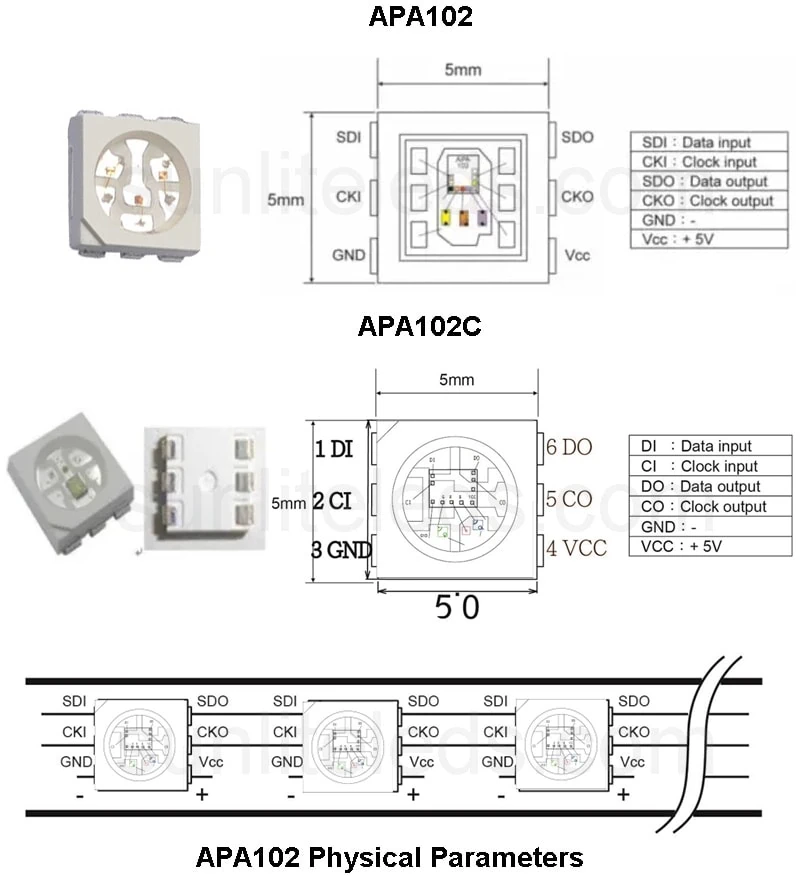
APA102 is a clone and enhanced version of the WS2812 LED chip. APA102 light strips feature excellent color mixing capabilities and are among the brightest light strips. True APA102 PWM refresh rate is 20kHz. The transmission rate is 20MHZ. However, due to their complicated construction, high cost, and limited sales volume, the original plant will no longer make APA102 LED chips beginning in 2016. So there is currently only one APA102 clone on the market: APA102C. However, its refresh and transmission rates are significantly lower than APA102.
Suntech Lite APA102C LED strip effect display:
APA107
APA107 LED Specification Sheet Download
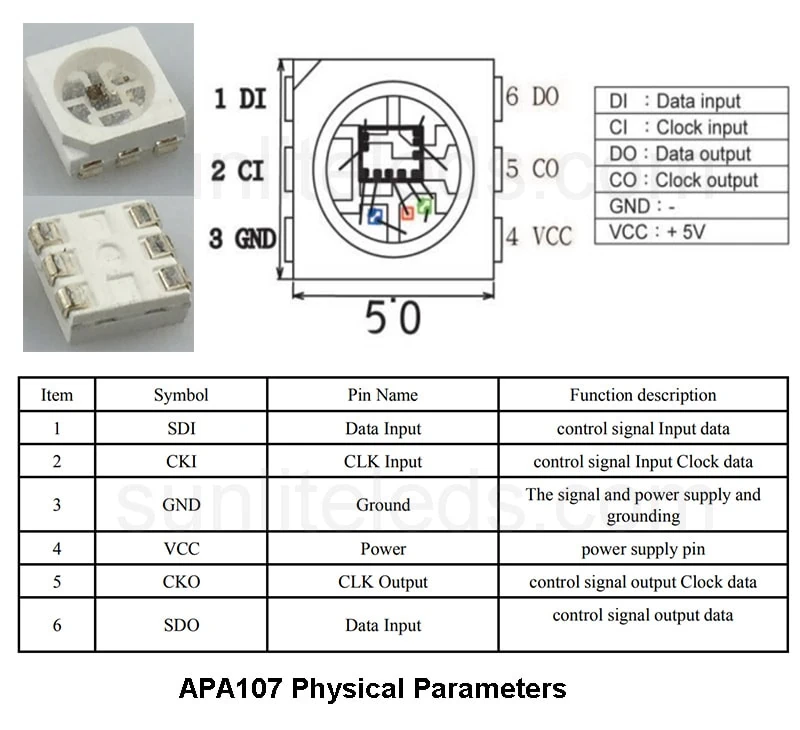
APA107 is a more cost-effective variant of APA102. However, it employs a slightly different communication protocol than APA102. The APA107 includes a programmable PWM pin for better color control precision and is intended to be more compatible with specific microcontrollers. The flaws of APA107 are also readily apparent. The refresh rate is merely 9 KHz, while the transmission rate is 30 MHZ.
HD107
HD107 is comparable to APA107 but with improved color performance and overall quality. The refresh rate is merely 26+ KHz, and the transmission rate is 40 MHZ. HD107 physical parameters is as same as the APA107.
HD107S
HD107S LED Specification Sheet Download
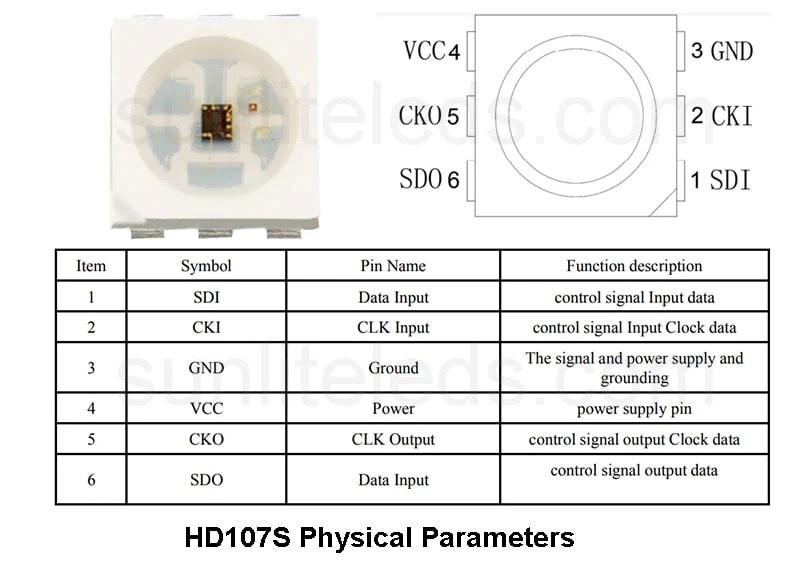
HD107S was introduced in 2018, and several metrics outperform APA102. It incorporates Newstar’s NS107S IC and has a more logical and sensible design. It uses the same protocol, PCB, and controller as APA102, but with improved performance, pin stability, and a factory-quality inspection procedure.
More interestingly, in addition to the 5050 sizes, HD107S offers 3535, 2020, and other smaller sizes.
The HD107S light strip includes a sleep feature that decreases power usage by up to 99% when the LED is switched off, making it perfect for battery-operated applications. If your product requires a higher refresh rate and transmission rate, HD107s is an excellent solution.
HD108
HD108 LED Specification Sheet Download
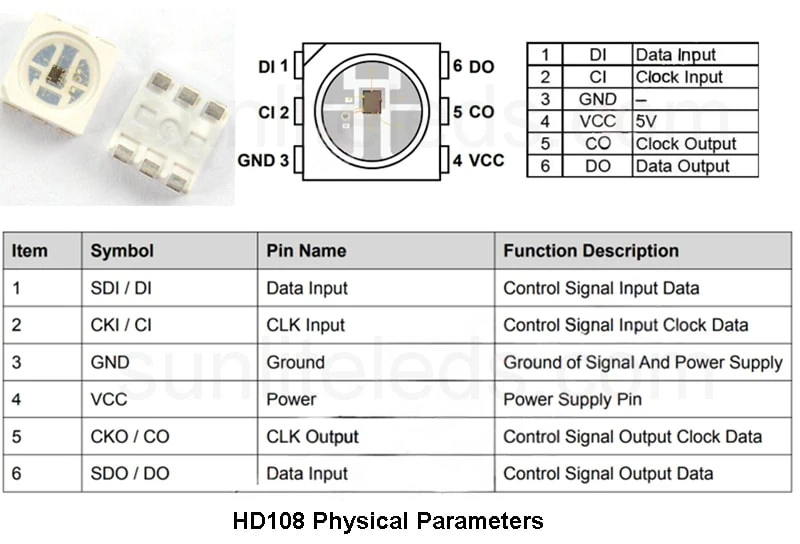
The HD108 is an upgraded version of the HD107s, the most recent chip in the HD series, with improved capabilities. HD108 offers the highest data transmission rate and a lower voltage drop than APA102. One end can power a 5m/16.4ft HD108 light strip in pure color with no color variations. It is ideal for LED panels and outdoor advertising displays that demand outstanding picture quality and precise brightness control.
APA102 vs APA107 vs HD107 vs HD107S vs HD108
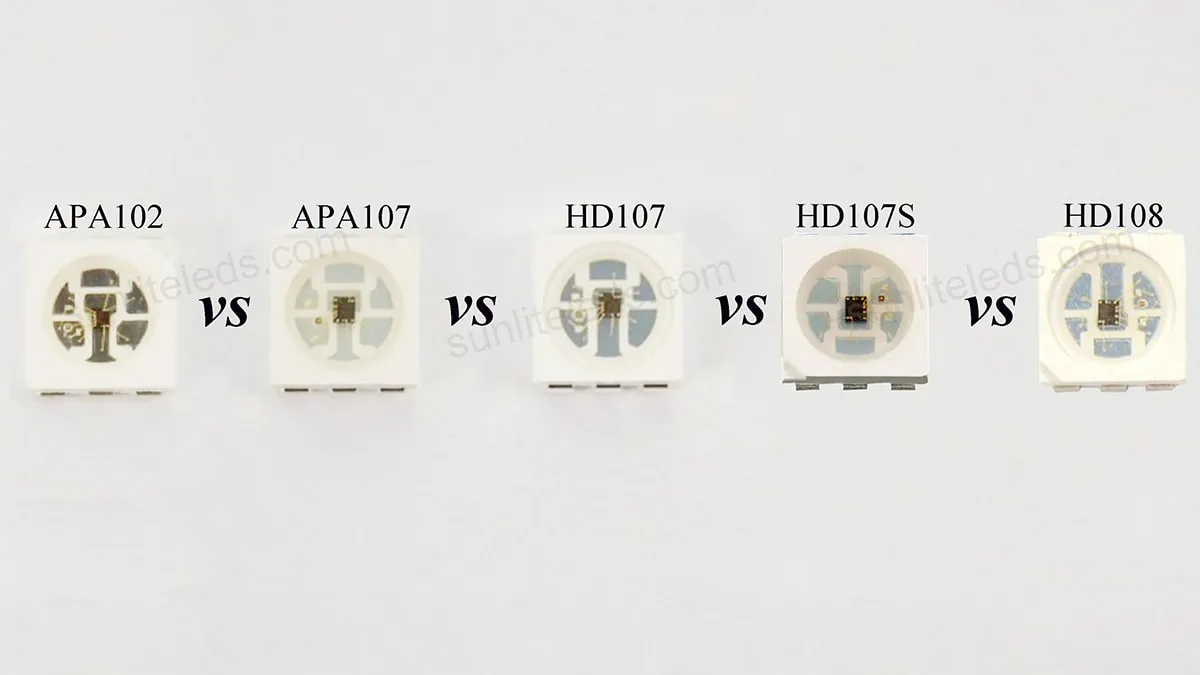
APA102 vs APA107 vs HD107 vs HD107S vs HD108 Table Detailed Explanation
PWM Refresh Rate: This relates to how quickly the LED can be switched on and off, which influences its ability to display fast-moving graphics and transitions. HD108, HD107, and HD107S offer faster refresh rates (more than 26+kHz), making them more suited for applications needing frequent updates, such as video displays. The refresh rate of the APA107 is just 9kHz, which is somewhat lower in comparison.
Transmission Rate: This determines how rapidly data can be sent to the LEDs, which influences how smoothly they can display changing pictures or effects. HD108, HD107, and HD107S offer the fastest 40MHz transmission speeds, enabling for smoother and more sophisticated lighting sequences.
Bit Depth: This regulates how many colors may be created. HD108 distinguishes out for its 16-bit depth, which allows for a far larger spectrum of colors and tighter control over shades, making it excellent for applications requiring color accuracy and gradation. While APA102, APA107, HD107, and HD107 have an 8-bit depth.
Gray Scales: This is directly connected to bit depth and determines how many brightness fluctuations each LED can display. HD108’s 16 bits give a substantially larger number of 65536 gray scales, allowing for more detailed and delicate lighting effects. Other chips, by comparison, have 256 gray scales.
Voltage Drop: Voltage Drop: The decrease in voltage when electricity passes through the LED strip. HD108 is known for having lower voltage drop, which allows it can sustain brightness more consistently over greater distances without the need for extra power supply. If you want to get the most energy-efficient LED, the HD108 LED chip is the best option.
Energy Saving: This factor takes into account how much power the LED requires for optimal performance. HD108, HD107, and HD107S are distinguished by their energy efficiency, which makes them more cost-effective and ecologically beneficial over time.
Application: Describes the most appropriate application scenarios based on the LED’s specifications. While all versions are excellent for general illumination, including indoor and outdoor projects, the HD108’s higher color depth and refresh rate make it ideal for high-quality displays and applications that need exact color rendering.
This comparison focuses on technical developments from APA102 to HD108, with HD108 providing the best performance in terms of refresh rate, transmission speed, and color accuracy, making it a top choice for high-end applications.
APA102 vs APA107 vs HD107 vs HD107S vs HD108 Comparison Video
Suntech Lite APA102 vs APA107 vs HD107 vs HD107S vs HD108 LED strip lighting effect video display:
Final Words
In one sentence, the APA102 establishes the stage with its high-performance dual-signal approach. The APA107 and succeeding HD series (HD107, HD107S, and HD108) improve on this with increased PWM refresh rate, color depth, and transfer speed. If you still have any questions, or you don’t know which one you should choose for your project, please feel free to contact our professional LED engineers.
